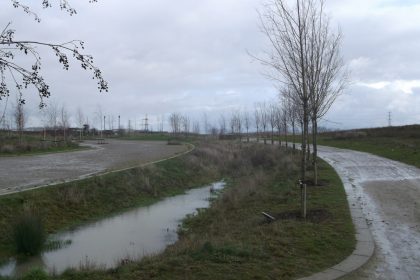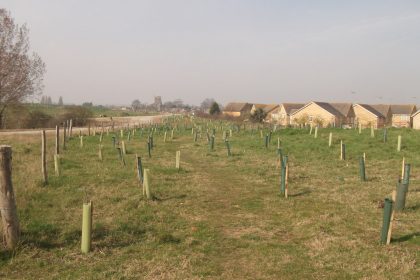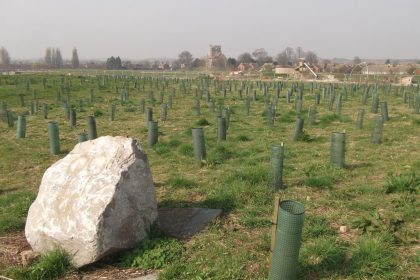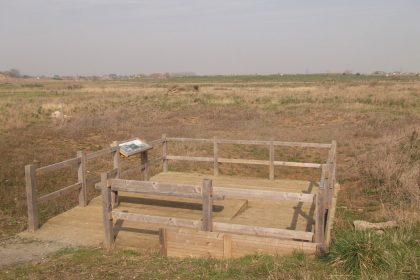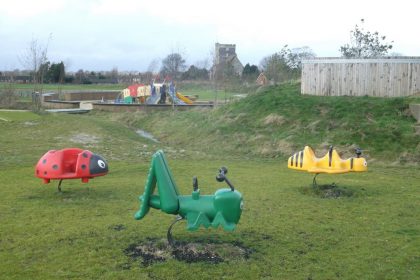Set in 128 acres, Milton Creek Country Park stretches from the shores of the Milton Creek, past Asda and Milton Regis’s Holy Trinity Church, to the paper mill and fishing lakes in Kemsley. There is a community events space and natural play area as well as an extensive network of paths.
Milton Creek Country Park has a variety of habitats which allows for a wide range of both fauna and flora to be found across the park. There are 3 main habitats across the country park, grassland, woodland and wetland. The grassland areas are becoming more diverse over time which is attracting insects in particular Milton Creek Country Park is of particular importance for its shrill carder bee populations. The woodland area is still maturing as the trees are relatively young. It has developed through tree planting of native species and by natural scrub regeneration. The scrub areas are particularly important for the nightingale which is a protected red list species. Scrub management is therefore important to ensure this environment retains the population of nightingale across the Park. There is a network of ditches across the Park which drain into a reed bed, other water bodies include the fishing lake and ponds. The ponds are important for amphibian including smooth newts and great crested newts.
Several species of bat have been recorded across the Park, it is thought that the area is used as foraging as no roost site have been recorded. Bats recorded whilst on bat walks are common pipistrelle (Pipistrellus pipistrellus), soprano pipistrelle (Pipistrellus pygmaeus) and noctule bats (Nyctalus noctula).
Milton Creek is site of regional significance for bumblebees due to it supporting 5 of the 6 rarest bumblebee species. The grassland areas are managed to provide both shelter and foraging habitats for the these bees. UK’s rarest bumblebees the shrill carder bee (Bombus sylvarum), and Kent’s rarest bumblebee, the red-shanked carder bee (Bombus ruderarius) can both be found in the park.
The range of shrubs, trees and grassland found in the Park make Milton Creek a good site for birds. Three species are of county level importance, the nightingale (Luscinia megarhynchos), linnet (Linaria cannabina) and reed warbler (Acrocephalus scirpaceus).
The fishing lake falls within the Park’s boundaries and the Sittingbourne and Kemsley Light Railway runs through the Park. The Kemsley Down station is within easy walking distance and can be accessed from the Saxon Shore way on days when the Steam Railway is operating.
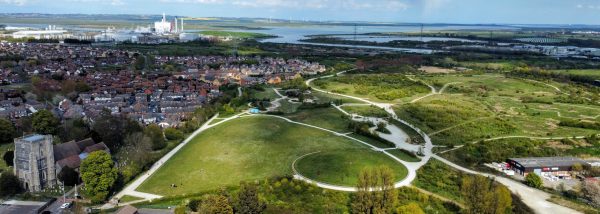
Philip Bourne – drone shot of the Park – May 2021
Below are some photos of the park taken by David Anstiss in March, 2012. A lot has changed in the last 10 years.

